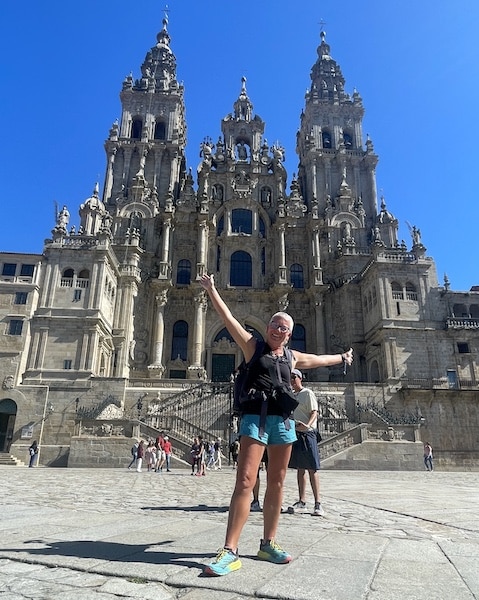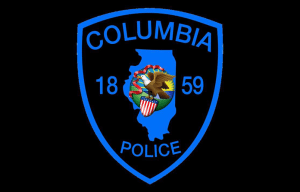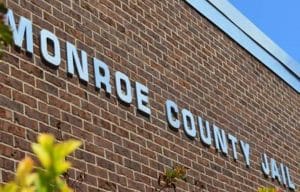Walking the Way of St. James

de Compostela in Spain.
A local retired nurse recently completed a nearly 500-mile hike across Spain, crossing an item off her bucket list and experiencing a journey that already seems to have had a profound impact on her.
Mary Baldree has called Waterloo home since 1985. She’s been retired for some time and was keen to test herself with a rather demanding trek that had been on her mind for several years: the Camino de Santiago.
Also known as the Road to Santiago or the Way of St. James, the Camino is a collection of routes leading to Santiago de Compostela in northwestern Spain, specifically the city’s cathedral which houses the tomb of St. James.
Possible Camino routes start in areas all throughout Spain, though the most popular of these routes begins at Saint-Jean-Pied-de-Port close to the Spanish-French border.
According to American Pilgrims – an organization with chapters across America which assist in planning trips pilgrimage trips – the Camino has a history spanning centuries, as legend suggests James the Apostle preached throughout the Iberian peninsula, and his body was ultimately returned to the region after he passed away.
Even before the Middle Ages, the Camino served as a frequent pilgrimage for Christians, and the tradition has continued to modern day.
Baldree started her own pilgrimage in late August. She recalled first having her interest in the trip sparked upon seeing the 2010 film “The Way.”
While Baldree suggested there are likely many Americans who walk the Camino after first learning about it in this movie, she recalled several individuals she encountered on the trip who had their own reasons for traveling, specifically noting two young men seeking some clarity, one who felt overwhelmed with a desire to find a way to make the world better and another who felt he had fallen in with the wrong crowd.
“Just about everybody on the Camino, when we’re walking, that’s what we ask each other,” Baldree said. “‘How are you here, and how did you find out about it?’”
Of course, Baldree’s decision to take her first steps on the Camino weren’t just made on a whim.
She spoke about an extended period of self-doubt that she went through only to find the will and the urge to accept the 800 kilometer challenge.
“In my mind over the years, it was like, ‘I can’t do that. That’s crazy. It’s too much,’” Baldree said. “Whatever thoughts I had, they were there, but I proved myself wrong.”
Baldree described some of the various sights she experienced along her trip, from the trek across the Pyrenees mountain range which served as her first major hurdle coming into Spain to more dry, barren stretches.
While the scenery was undoubtedly impressive, Baldree also emphasized the personal aspect of the Camino.
There were plenty of long stretches where she was alone, lost in thought or stopping to snap pictures of the countryside around her.
But there were also long chunks throughout her eight-hour daily hikes that she would be with her fellows on the Camino, talking across languages and sharing their journey.
Each day was also capped off with an evening filled with dinner, laundry and a well-deserved rest in either a private room or a hostel with other travelers.
The way Baldree described it, it seemed as though she was never really alone, even when not surrounded by others on the Camino. She always had people guiding her.
“You start in Saint-Jean-Pied-de-Port, France, and there’s arrows that just mark your way, you just have to look for them,” Baldree said. “So that made it easy, in a sense, that I knew that I could get to my destination just by following arrows. Plus there are cities and villages and little hamlets all along the route, so there’s places to stay and places you could stop to get something to eat.”
She summarized the Camino, breaking it down into three parts. The first third is all about the body as you acclimate to the daily experience. The second third is about the mind and appreciating the nature around you.
The final part of the trip, Baldree said, is spiritual.
She explained that she’s not exactly religious. Though the Camino is steeped in Catholic history, she said you don’t have to be Christian to get something out of it.
“It impacted me more than what I expected,” Baldree said. “I think a lot of it was just being out in nature all day. I mean, I’d get up in the morning, and I’d walk for probably an average of eight hours, just being out in the weather, in the sun, in the rain with the trees and the flowers and the breeze and the rainbows. Just the beauty of it all, it was so impactful just to be out there. To me, that felt spiritual. I felt like that’s my church.”
She further spoke with great passion about her various takeaways from the trip, the importance of living instead of merely existing in life and the need to rest, appreciate and love.
Baldree added that she greatly enjoyed the solitude of the journey and the time alone with her mind. The trip, as a whole, seems to have made her generally far more confident in herself.
She credited Fast Fitness in Waterloo as a big reason she was able to physically take on the Camino, and while the journey was long and difficult, she had nothing but good things to say about the experience.
“Doing the Camino is the hardest thing I’ve ever done,” Baldree said. “I can’t even think of anything to compare it to, but I did it.”
For more information on the Camino de Santiago, visit americanpilgrims.org.






